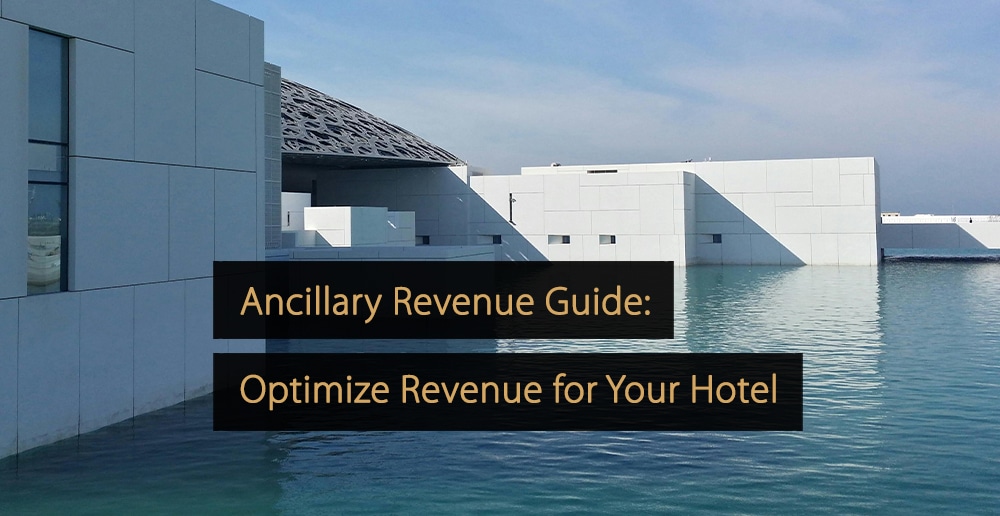When engaging with online travel agencies (OTAs) in these volatile times, hoteliers must adequately understand the value and costs of all distribution channels. Any relationship weighted in favour of an OTA to the detriment of a hotel’s bottom line needs to be reviewed, and steps should be taken to maximise direct bookings.
Hoteliers Should Explore OTA Alternatives
For many hoteliers, OTAs are an accepted distribution strategy due to their marketing power and high traffic. However, today’s costs for acquiring guests are significant, and in some cases, OTAs may be hurting more than helping.
With up to 25 percent commission being charged on average for every OTA booking, these third-party costs directly impact the amount of revenue hotels can secure from each guest, which can, in turn, dampen profitability at a time when every euro, pound and dollar counts. On top of that, many OTAs require a last-room-available guarantee for their channels, which results in hotels losing ultimate control on yielding inventory.
Given the cost associated with doing business with OTAs, hoteliers should explore opportunities to grow bookings from alternative channels. Importantly, the most cost-effective online booking channel for a hotel remains its website. But how can you maximise direct bookings through your website?
Enhance Your Digital Guest Experience
The first step is increasing web traffic from potential guests and converting “lookers” into “bookers.” To attract more website visitors and increase booking conversion rates from this channel, hoteliers need to understand those people who land on their website. What dates are they searching for? What is the purpose of their trip? Where do they search? Collecting this information provides data that can be used to develop targeted marketing campaigns that attract the right type of website visitor—those with a higher chance of becoming a guest.
When researching a location, potential guests may visit a variety of travel websites and OTAs before deciding where to stay. Hotels need to keep their property on the top of the consumer’s mind and influence guests to book on the hotel’s website. Technology that offers tailored ads customised around visitor behaviour or website activity can help achieve an estimated 10 percent return rate on website visits, increasing direct booking opportunities. Hotels can also increase direct bookings by retargeting past visitors and directing them to their website.
Today, a more significant share of a hotel’s marketing budget is dedicated to attracting more qualified traffic to their website than ever before, but what if the actual architecture and content on your site prevent rather than enables the booking process? If a website’s booking process is not seamless and secure, guests will book elsewhere. Hoteliers need to ensure their website delivers an enhanced experience with user-friendly features that provide easy navigation and booking; otherwise, the work that went into attracting a potential guest will be for nothing.
Potential guests often visit a hotel’s website for more information on the property and to assess if the hotel will reflect the experiences they seek. Suppose the website isn’t focused on the needs of the consumer, such as explaining local attractions nearby, and having more photos, videos and reviews than an OTA. In that case, website visitors may quickly move on to another property. Hotels may not be able to compete with OTAs on the level of website traffic they generate, but they should beat them at showcasing their own property.
Today, health policies and safety protocols are a traveller’s top concerns. Therefore, hotels should reassure their potential guests by highlighting health and hygiene policy status on their website. Additionally, hotels have valuable insights (and data) on their past guests, which means they can send specific messaging to these individuals (e.g., promote welcome-back packages, outline the hotel’s cleaning process, and provide special offers and incentives that help generate ancillary revenue) to drive direct bookings and avoid having to rely on costly OTAs to support occupancy.
Meanwhile, independent hoteliers need to think about altering site content that appeals to any new targeted audiences. For example, promote staycation offers with various amended activities in markets limited by international travel restrictions. A hotel’s own website is the perfect channel to showcase its property’s personality and unique selling points. Hotel websites should also incorporate user-generated content from social media, such as user ratings and reviews, to assure guests of the credibility and service standard of the hotel.
Since over half of online bookers search online reviews before making reservations, it is critical to provide online reviews as a component of website content. A hotel’s website must also be informative, multilingual, and regionally customised—enabling customers to be assured of the credibility and service standards of the hotel. Optimising their website for viewing on the go with iPads, other tablet-sized devices and smartphone compatibility is an absolute must to meet the expectations of tech-savvy travellers ready to embark on their next experience.
Don’t Rule Out OTAs Entirely
Hotels need to understand their true distribution costs. Having reports on the cost of guest acquisition by channel partners can help hoteliers negotiate better contracts with third-party OTAs, gaining flexibility in managing rate and availability parity. This information builds a basis for more profitable decisions in the short-term and more long-term channel-value-centric decisions.
It should also be stated that OTAs are not all bad. They can introduce hotels to an audience of potential guests a property might never have a chance of reaching – especially in lower demand periods. Hoteliers heavily invested in OTAs to secure bookings might consider using those platforms to support future business better.
For example, to increase both new and return business, intelligent hoteliers are letting OTAs handle the initial capturing of guests and then implementing strategies and incentives that ensure those guests book future reservations directly with their hotel, eliminating ongoing third-party booking expenses.
Free Course: Revenue Management Foundations Course
This free revenue management course will lay the foundation upon which you can build a solid commercial success framework for your business. Click here to learn more about the course.
In today’s uncertain operating environment, every euro, pound and dollar counts. Any method to support growth in guest bookings should be explored, and every guest secured should be evaluated to determine their true worth. With costs associated with acquiring new guests through OTAs increasing, hoteliers need to rethink distribution, reconsider their most effective channels, and recharge direct bookings.








Leave A Comment